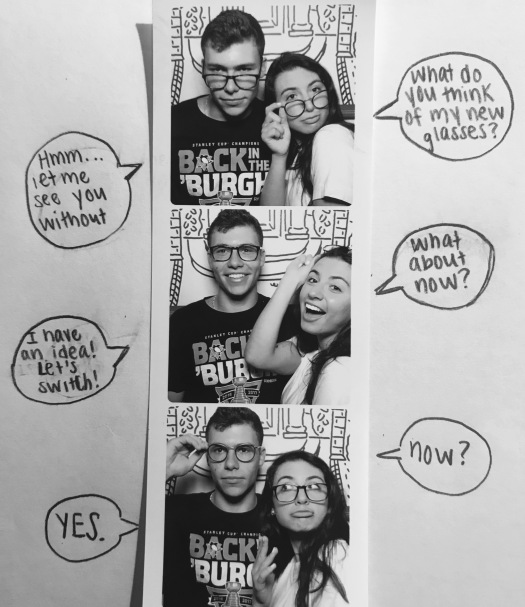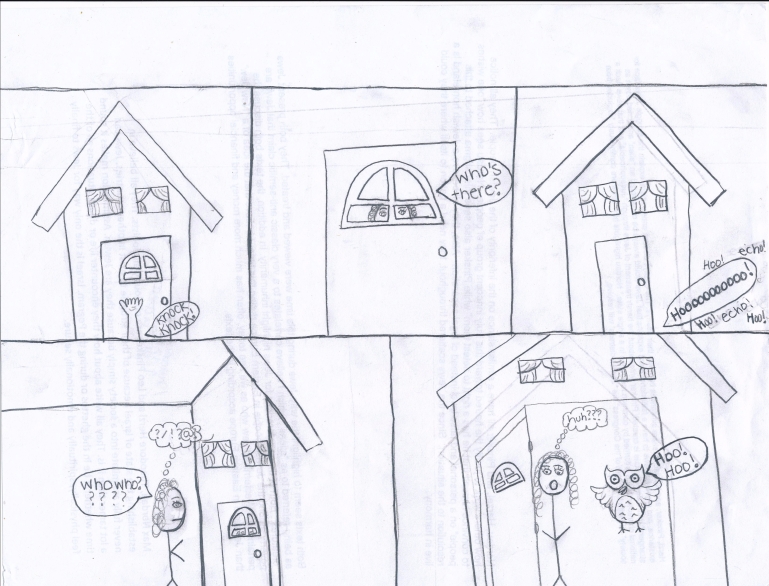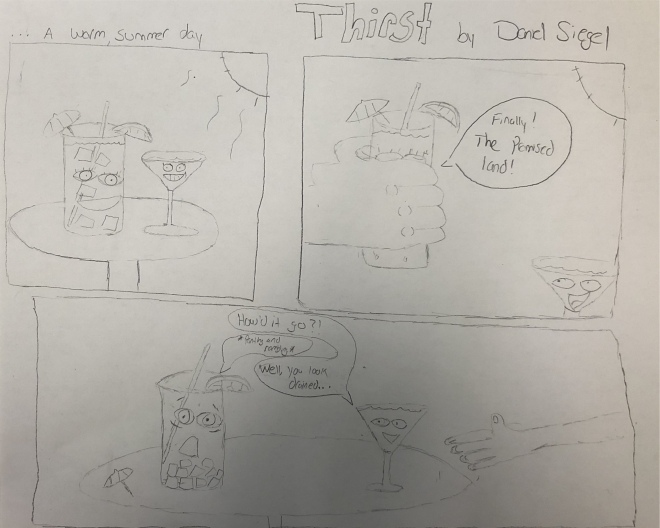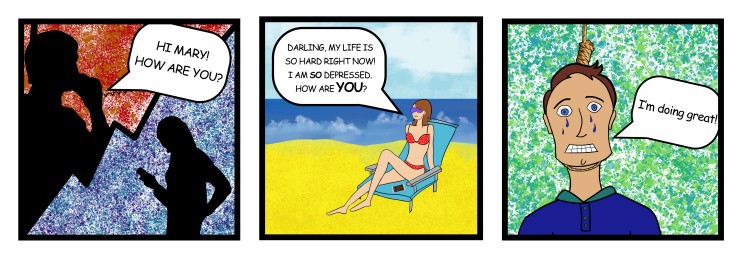Due: 2/25
Tag: sk5
In How to Read Nancy: The Elements of Comics in Three Easy Panels, Paul Karasik and Mark Newgarden carry out an extended discussion of comics through repeated analysis of the single Nancy strip by Ernie Bushmiller from August 8, 1959 (at the top of this post). They explain that “one of the least tangible yet most significant implements in the cartoonist’s toolbox is the varied use of rhythms.[…] One repetition makes a pair. But add another and the repetitions have become a series, the basic building block of all rhythm. A set of three has the smallest number of elements that can establish a pattern (as well as violate it). Three implies more to come” (134).
For this week’s sketch assignment, create your own triptych comic. As you compose your triptych, I most want you to focus on creating a story with a very clear beginning, middle, and end. Your story can be minimalist, impressionistic, comic, dark, weird or whatever you want it to be — but make sure that each panel of the triptych moves that story forward from beginning to middle to end.
You can draw your triptych, or create one using photographs, maybe along similar lines as the webcomic A Softer World, which ran weekly for about twelve years starting in Feb 2003. Emily and Joey published 1248 comics in that time, each consisting of three panels with photographs and words superimposed on them – often it seems to be a single image cropped into three panels, but sometimes it’s three photos taken as a series – and then the title of the comic appears when you hover your mouse over the comic (creating space for a sort of fourth panel or commentary). The comics tend to be quite dark.
I’m looking for compact and playful storytelling through both images and words. It’s an opportunity for you to play with irony, humor, and/or wit.
Add a paragraph reflecting on your triptych comic. What choices did you make in crafting your narrative? Describe the composition process a little bit. What was challenging about this assignment? How is crafting this sort of comic strip different or similar to other writing you’ve done this semester?










